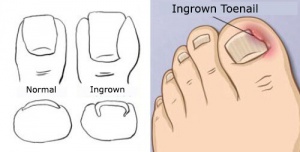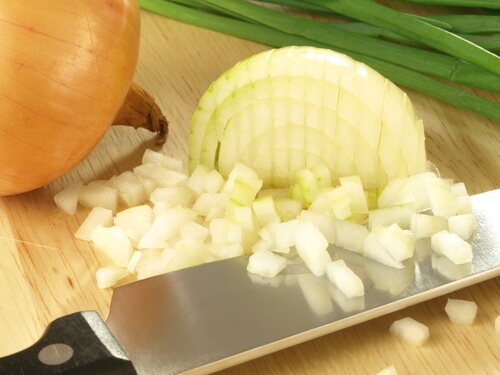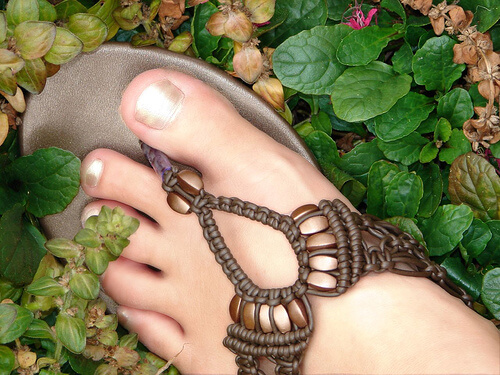Treatments for Ingrowing Toenails
3 minutes
Ingrowing toenails can be very painful and today we bring you different treatments to cure them

Last update: 12 May, 2022
Ingrowing toenails are when one of the corners of a nail curves over and starts to grow under the skin, causing redness and inflammation. This can happen to any of our toes, but it is most common in the big toe.
Most frequent causes
- When we don’t cut our toenails properly, cutting them into a rounded shape, then this causes abnormal growth. In order for the nail to grow normally, we must cut them straight, allowing the corners to come out so that they don’t curve over and get embedded in the skin surrounding our toenails.
- When we wear very tight shoes or shoes with very high heels, we also affect the free growth of our toenails causing them to become ingrowing.
- If we don’t adequately clean our feet, our toenails collect dirt that can cause them to grow inwards
- When we bump into things or hit our toenails, then this can damage our toenails.
Read more: 5 Benefits When You Stop Wearing High Heels
Symptoms
- The affected toe is very painful
- The area of the toe that is touching the nail is very red.
- Swelling in the area surrounding the nail.
- Sensitivity and inflammation.
- Possible infection.
People suffering from arthritis, obesity and circulatory diseases (or people with low defenses in their immune system) are those that have the highest risk of suffering from ingrowing toenails.
Homemade remedies for the treatment of ingrowing toenails
- Put crushed garlic on the affected toe. Leave it on the toe overnight, securing it to the toe with a bandage so it stays in place all night.
- Another method is to soak the affected toenail in a little bit of onion juice.
- You can also soak the toe that is bothering you in warm water mixed with salt. Afterwards, you should keep the toe wrapped up overnight.
- Soaking the affected toenail is the most-used home remedy. It is very effective to soak it with a small amount of marigold dye in a pint of warm water. The toe should be soaked for about thirty minutes. After that, you should wrap the toe in a piece of clean cloth. You should leave the bandage on the toe overnight and the next day you’ll notice an improvement.
- Cut a lemon and heat it in a pan. Make a hole in it so that you can fit your toe with the ingrowing nail on it in the lemon. Leave your toe inside the lemon for about twenty minutes: the lemon will soothe the pain.
- Finally, in order to reduce the swelling of the toe and to extract the ingrowing toenail more easily, you should peel and wash one carrot. Then grate the carrot and put a small amount on the ingrowing toenail. You should allow this to take effect for at least one or two hours.
Read more: Tips to Relieve Foot Pain at Home
Special recommendations to promote toenail growth
- Cut your toenails straight across, not in a semi circle. It is important to remember that the shape of the nail should be straight, never rounded. If you leave it rounded then the nail will curve and get embedded in the skin.
- Bathe the toe in warm water to ease the pain: soak your ingrowing toenails in warm water for half an hour several times per day. This will help to get rid of the pain and will allow you to extract the nail.
- Buy proper footwear. Shoes should be wide at the front to provide your toes with the right amount of space. The height of your heels shouldn’t be more than an inch at the most.
- Wear sandals at home. In this way the affected toenail will make a quicker recovery.
- Avoid bumping into things and tripping. When you have an ingrowing toenail and you trip over something, this can cause the nail to become even more embedded in the skin. That is why you need to be very careful, especially if you wear sandals.
- Consult your doctor. If you suffer from diabetes, the first thing you must do when you spot the first symptom of ingrowing toenails, is to consult your doctor. Complications might occur due to poor circulation.
This text is provided for informational purposes only and does not replace consultation with a professional. If in doubt, consult your specialist.










